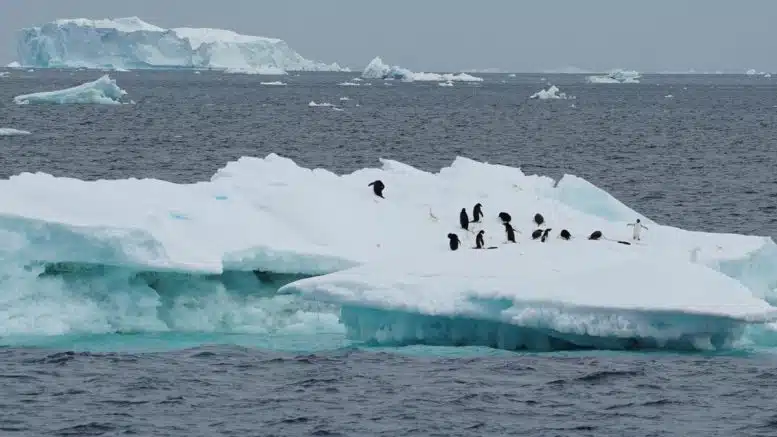Researchers from the British Antarctic Survey and the University of Cambridge have uncovered compelling evidence indicating a significant and rapid shrinkage of the West Antarctic Ice Sheet around eight thousand years ago, marking a notable event at the conclusion of the Last Ice Age.
Their findings, documented in a study published in Nature Geoscience on February 8, shed light on the remarkable thinning of the ice sheet, with one location experiencing a reduction of 450 meters in less than two centuries—an astonishing rate surpassing the height of the Empire State Building. This discovery marks the first conclusive evidence of such swift ice loss in Antarctica, prompting concerns among scientists regarding the potential instability of the West Antarctic Ice Sheet in the face of current warming trends.
Professor Eric Wolff, a senior author of the study from the Department of Earth Sciences at the University of Cambridge, emphasized the significance of this finding, noting that the rapid ice loss observed in the past raises apprehensions about the ice sheet’s future stability. He cautioned that if certain portions of the ice sheet become destabilized, a scenario of rapid collapse could ensue, surpassing the predictions outlined in current models.
The vulnerability of the West Antarctic Ice Sheet is underscored by the substantial freshwater reservoir contained within its ice sheets, capable of elevating global sea levels by approximately 57 meters. Particularly concerning is the fact that a significant portion of the ice sheet rests on bedrock situated below sea level, rendering it particularly susceptible to destabilization.
Dr. Isobel Rowell, a co-author of the study from the British Antarctic Survey, highlighted the importance of understanding the behavior of the West Antarctic Ice Sheet during the transition from the Last Ice Age to the present interglacial period. By analyzing ice cores, researchers were able to reconstruct the thickness and extent of the ice sheet during this critical period, providing valuable insights into its response to changing climatic conditions.
Rowell emphasized the significance of incorporating the precisely dated observation of the ice sheet’s retreat into improved models, which could enhance our understanding of its dynamics and aid in predicting future scenarios. The study underscores the urgency of addressing climate change to mitigate the potential consequences of continued ice loss in Antarctica and its implications for global sea levels.

